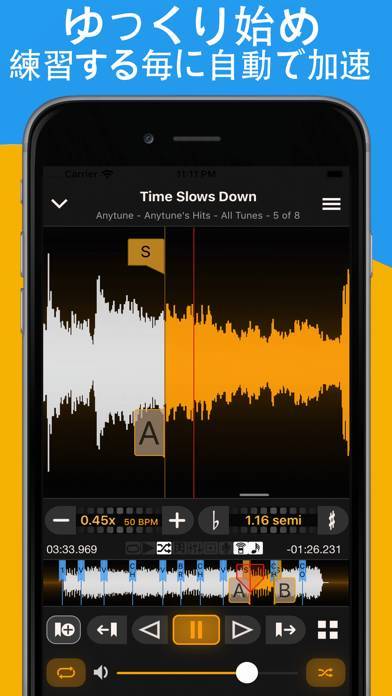
When 2 notes are just slightly out of tune you’ll hear a pulse that gets slower the more in tune we are. With the drone playing in my headphones, I can try to match the exact frequency of the tone. For this to work you need to be using headphones though.Ī more advanced way to use the tuner is to not look at the display, but use just use your ear to hear if you are in tune and make necessary adjustments. I like to have the app play drone notes that match the note I’m playing while practicing long tones. I always have it set to ultra fine because why not. I use the same app for this as the metronome because Tonal Energy is a great tuner as well.įirst I set it up to transpose for my instrument. The next essential thing all saxophone players should have is a good tuner. Try those out and let me know how it goes in the comments below! Tuner This will require you to rely on your own inner time feel rather than always using the metronome as a crutch. Simulating this with the metronome on 2 and 4 can help us get into the habit of feeling the rhythm in a more relaxed way.Īnother way to challenge yourself, is to set the metronome to randomly skip clicks a certain percentage of the time. This takes a bit of practice at first, but with the exception of classical music most of what we play on the saxophone is going to be styles where the drummer is accenting the weak beats 2 and 4 on the hi-hat. One, set it to click on beats 2 and 4 only. Here’s a couple great ways to challenge yourself if you’re already practicing with a metronome. You could also have the metronome playing through external speakers. Otherwise it just won’t be loud enough to hear over the sound of the saxophone. I always listen to the metronome using headphones or ear buds. I love it because it has a ton of other functions and I can customize the metronome settings. My favorite is this one Tonal Energy, I’ve been using it for years. There are hundreds of metronome apps out there so it doesn’t really matter which one you use. This is going to be the most important tool apart from your instrument for every musician. Tonal Energy Metronomeįirst up is a metronome. In this lesson, I’m going to tell you about some of the best apps that will help you get more out of your practice time, all while having fun in the process. Today, we have a lot more options available. If you are interested in learning pieces by ear or making transcriptions, I highly recommend Anytune.In the old days, technology in the practice room consisted of a wind up metronome and a cassette recorder. I like this app quite a bit and have been having fun trying to learn various jazz solos on the bassoon. This is not something that I currently need but I can see it being really handy for someone that spends a majority of their time teaching jazz to students. You’ll have to pay an additional $4.99 if you want to be able to export slowed down or pitched songs as stand-alone playable files.
#Anytune pro free#
There is one that is free to try that doesn’t have all of the bells and whistles: iTunes Link for Anytune.Īnytune Pro+ is $14.99 currently. One is just for updates for people who bought an older version. There are three different versions in the store.
#Anytune pro plus#
It is a plus app and works on the 3GS and up and iOS 5.1 and later. Luckily, this is a well supported app and the developer has a Comparison page to help us all out with this.

The most difficult thing to learn about this app is all the different versions, prices, and upgrades. Easily loop the section you’re trying to learn or use the step-it-up trainer to gradually increase the speed of a section. You can also export what you’ve done so that someone else could import it into their Anytune app.įor practicing, there’s quite a bit built in. Also very easy to set marks so that you can get back to the spots that you want to work on. This is a big time saver from other apps like this that I have used. In terms of transcribing, I love that you can find your place visually. (Be aware that you will not be able to open any music with DRM on it but you will get to see all of the music that’s in your iPod app on your device. Working on something with a lot of notes? It’s great to be able to slow down what you played and find those little spots where your finger work is not quite as clean as you’d like. One of the coolest things about the import is that you can record directly into the application.


 0 kommentar(er)
0 kommentar(er)
